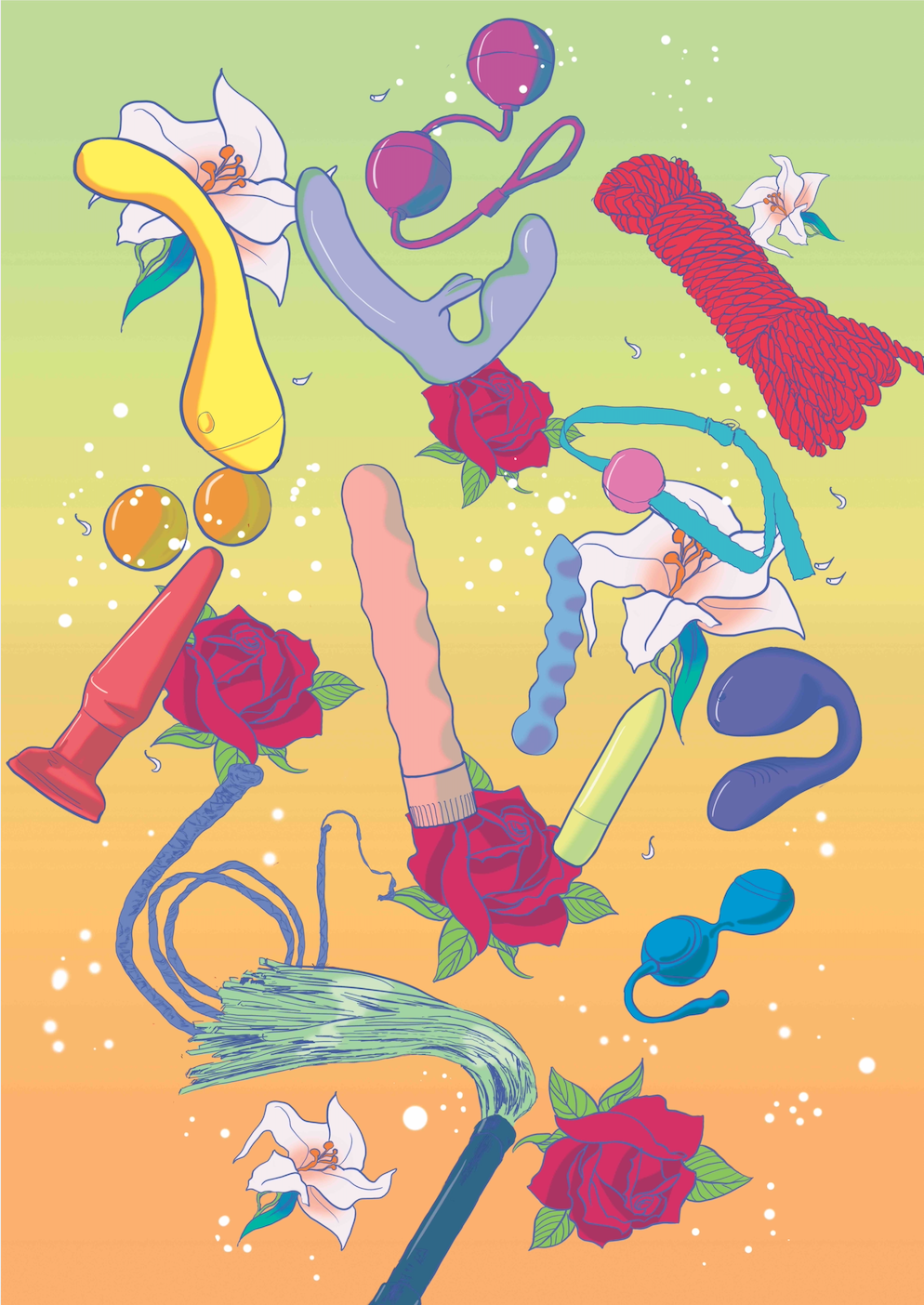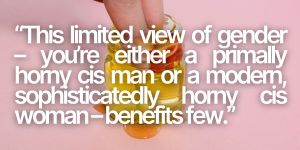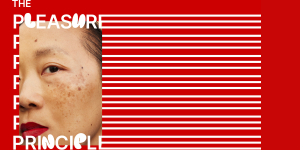Sex toys, pleasure and overcoming dysphoria: Toys are us
By: Nevo Zisin

Sex toys can be useful not just in facilitating pleasure but also in the journey to overcoming body dysphoria.
In the same year I got my period for the first time, I got my first vibrator. I was 12.
Unlike many people I know, I didn’t feel shame or embarrassment over my period. I was part of a tight-knit group of girls who were all body-positive and encouraging of sexual exploration and changes in our bodies.
My closest friend (then and now) was particularly developed for her age and sauntered into sex-toy shops along Chapel Street in inner-city Melbourne with the kind of confidence that allowed her age to go unquestioned. She’d bought $20 vibrators for each of us as a celebration for getting our periods.
We even had little period parties and gave one another gifts. I got a metallic green vibrator, a pair of cute underwear from Kookai and a book of sudoku. I can safely say it was the vibrator that got the most use.
I distinctly remember the very first time I used it and mouthing “oh my god” as I experienced my first, but certainly not last, technologically induced orgasm.
I started masturbating when I was about three years old.
While most children went down kicking and screaming for kindergarten naptime, I was very excited about what awaited me because, for this toddler, naptime was fap-time. The teachers became uncomfortable and were unsure of what to do with me while I had a very good time with the blanket.
I used to call masturbation doing “my work”. I did my work all over the house, in front of family members, and sometimes in private with a sign on my door indicating that I was “doing my work”.
Masturbation is an incredibly common behaviour displayed by children, but it tends to cause parents to panic, concerned that their child will grow into some kind of sexual deviant. That is very often not the outcome, and definitely wasn’t the case for this non-binary, transgender, polyamorous, slutty queer-to-be.
My mum was non-judgemental about it, but whenever I slept at my grandma’s house, she would tuck me in hospital-bed-style and place my hands above the doona. With a stern finger, she would tell me to “keep your hands there”.
As soon as she left, I would walk my hands down and under the sheets: my first true instances of rebellion (though, to this day, I still can’t stand sheets tucked in too tight).
Masturbation has always been a big part of my life – and so have sex toys. When I started having sex, I was a teenage lesbian excited about all of the products that could enrich my sex life.
For straight couples, there is often this assumption that sex toys are unnecessary, or a man’s ego gets in the way of experimentation with dildos, vibrators and strap-ons. I am grateful that I went through my adolescent sexual awakening as a lesbian.
But it took me and my partner at the time many months before we could work up the courage to finally enter a sex-toy shop together. We were worried not only about being underage in an explicitly over-age landscape, but also of the homophobia and confusion we expected to encounter.
We had travelled to the industrial outer-south-eastern suburbs of Melbourne and found ourselves in a huge factory-style shop. The women were friendly and not at all what we had imagined. In response to our explicit requests for toys that didn’t look too realistic, they presented us with far too many animal-related toys. Not to yuck anybody’s yum, but I personally was not interested in a bunny anywhere near my junk.
We settled on a purple dildo with zero veins and as little resemblance to an actual human body part as we could get.
In some ways, that dildo laid some of the foundational building blocks for my later realisation that I was trans.
I had this complicated relationship with sex toys in that they could make me feel more inside my body than ever before and simultaneously more dysphoric than I had ever been. I couldn’t help but feel this acute frustration at the fact that I was moving my body in all the right ways and making my partner feel good, and yet I myself could feel nothing.
Sure, at times there were some ‘phantom limb’ sensations, but they were never quite enough for me. This frustration generated uncontrollable waves of dysphoria that would leave me with internal turmoil.
This new discomfort over sex was distressing. On a long road trip to a festival, I eventually brought up these feelings with my partner. They were amazing and suggested sex toys we could buy, along with some sewing they could do to create harnesses that may fit right. They told me that we would figure out a way through this together, and that it was okay that I was feeling this way.
They then gently suggested that maybe I might be transgender.
I didn’t react well to this. I got extremely defensive, claiming that I was a “strong feminist woman. You don’t know me at all!” Turns out when you’ve been with someone for over two years, they probably do know you and maybe you should listen to them.
When I was newly out of the transgender closet, I started looking into prosthetic penises and other products that I thought might ease my dysphoria. I wasn’t seeking these products just to make me feel less anxious, but also to make me feel euphoric in my body.
Gender euphoria can be as impactful and important to a trans person as addressing gender dysphoria. It was not just the absence of distress that I was looking for, but the presence of contentedness and joy.
Many transmasculine people don’t undergo bottom surgery. There are currently very few surgeons in Australia who perform genital reconstructive surgery on those assigned female at birth. For those travelling overseas, Dr Riki Lane at the Gender Clinic in Melbourne estimates that it can mean an investment of anything around the $50,000–$70,000 mark.
Once you take into account the huge unemployment rates among the trans community across the world, surgery seems incredibly unattainable.
Not every trans person will want to undergo any kind of surgery, but every trans person should have the option if they do want to. In place of this idealistic world where trans surgeries are covered by public-health schemes, there are sex toys.

Image: Kitty Chrystal
Sadly, though, many sex-toy websites overtly cater for a cisgender heterosexual clientele, with their sections divided into ‘for him’ and ‘for her’. It goes without saying that these categories make cissexist assumptions about the kind of anatomy ‘he’ and ‘she’ have. For a transgender person, these sites are isolating, dysphoria-inducing and cringe-worthy, especially if you are specifically seeking out sex toys in order to combat dysphoria.
In my long search for toys that would help me during the early days of my transition, I happened upon websites specifically targeted at trans men and transmasculine people. I found packers that would create a natural-looking bulge in my pants, stand-to-pee devices and realistic dildos.
At 17, I couldn’t quite fathom the price tag of owning something from each of these categories. And then I found it: a three-in-one device. This packer could be placed in your underwear flaccid, had a funnel-like cupping on the back that could be used to pee in a urinal, and had an external erection rod so the dick could also be used for play. I was beside myself with joy.
I spent hours watching YouTube reviews in which people would unpack their cocks, flop them around and give ratings. I read as many Tumblr blog posts as I could and, after chatting off my girlfriend’s ear about it, finally took the plunge and bought my first prosthetic penis.
It was practically colour-matched to my skin and set me back around $250 – a lot for someone in Year 12, but nothing compared to the possible surgical costs. I was stoked. I tracked my package every day, watching a dot inch across the screen, closer and closer to me.
Eventually, it arrived. I was ready to meet my dick.
I had many failed attempts at peeing while standing in the shower and practised holding my flow, releasing it slowly and cautiously so that I wouldn’t suffer any splashback. I practised masturbating as a cis man and enjoyed walking around with five-and-a-half inches of silicone tucked into my underwear.
I found myself acting like a pubescent teenage boy in that I had to readjust the positioning of my penis constantly. My dick and I went everywhere together; it was a match made in heaven. I had to find the right moments to whip it out and give it a wash in the sink (with a soap that now, whenever I smell it, reminds me of penis), but other than that, I really felt like this dick was my dick.
I even used it in play. And although I still couldn’t feel everything, I felt connected in a way I hadn’t ever felt before.
That dick was crucial in helping me through a time when I was deeply dysphoric and also passing as stealth (not out as transgender) in my workplaces. I could walk into the toilets with colleagues and use the urinal if I felt particularly confident. It was an experience unlike anything else. I was always worried there would be leakages – and there often were. But a little bit of pee was a small price to pay for the ability to do something I never thought I’d be able to.
At the age of 18, and with a few months of testosterone under my belt, I started to feel more comfortable in my gender expression and body. The physical and physiological changes that began to take place as a result of the hormones eased a lot of the discomfort I was feeling within myself. Additionally, surrounding myself with people who affirmed me meant I didn’t feel as much of a need to ‘prove’ myself.
Over time, my prosthetic penis also started becoming a burden. As I got more used to it, the feeling of its loss became so much greater every time I took it off. What was I left with? What was my anatomy, and what words could I use to describe it?
Even though this toy had been really helpful in distracting me from my dysphoria, it ended up playing into it even more. So I decided to take a break and instead consider my own genitals as my dick.
All of the sex toys I have been able to experiment with, connect with and create myself (out of a water bottle, hot water and a condom – but that’s another story) have allowed me to come to terms with my junk in a way I never could have before. And for that, I am incredibly grateful.
I don’t pack anymore and I don’t ever stand to pee. I figure, with how often I’m always running around the place, I deserve to sit and relax where I can. I have an important and lifelong relationship with vibrators, and I exclusively buy from sex-toy shops and brands that acknowledge the existence of people like me.
Sex toys are less of a ‘daily dysphoria reliever’ for me now, and more a fun extra thing to bring out on special occasions – a holiday dick, if you will.
After just over a year on testosterone, I went to babysit two children I had looked after a couple of years prior. Quite suddenly for them, I had facial hair, a lower voice and generally just looked quite different. Their mother told me they would inevitably have some questions for me.
Once alone, I prepared for the worst. They both looked up at me with inquisitive little eyes: “So do you have boy bits or girl bits?”
I thought about it for a while, then responded, “I just have me bits.”
Nevo Zisin is a Jewish, queer, non-binary writer, activist and public speaker. Based in Naarm/Birraranga/Melbourne, they run workshops in schools and workplaces around trans issues. They are the author of the award-winning Finding Nevo, a memoir on gender transition, and a contributor to the anthology Kindred: 12 Queer #LoveOzYA Stories.













